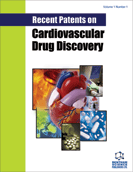Abstract
Recent studies have significantly advanced our understanding of arteriogenesis, raising hope that therapies to increase collateral arterial formation may become important new tools in the treatment of ischemic disease. The most important initiating trigger for arteriogenesis is the marked increase in shear stress which is sensed by the endothelium and leads to characteristic changes. Intracellularly, it was shown that platelet endothelial cell adhesion molecule (PECAM-1) becomes tyrosine-phosphorylated in response to increased shear stress, suggesting a role as a possible mechanoreceptor for dynamic and continual monitoring of shear stress. The signal generated by PECAM-1 leads to the activation of the Rho pathway among others. More than 40 genes have been shown to have a shear stress responsive element. The Rho pathway is activated early and appears to be essential to the arteriogenic response as inhibiting it abolished the effect of fluid shear stress. Overexpression of a Rho pathway member, Actin-binding Rho protein (Abra), led to a 60% increase in collateral perfusion over simple femoral artery occlusion. A patent for the Abra gene has been filed recently. It may be a harbinger of a future where collateral arteries grown on demand may become an effective treatment for ischemic vascular disease.
Keywords: Arteriogenesis, collateral artery, mechanotransduction, shear stress, ENDOTHELIAL CELLS, TETRACYCLINES, INTRACELLULAR SIGNALING, MONOCYTE-ENDOTHELIAL INTERACTION, SMOOTH MUSCLE CELL, PERIVASCULAR SPACE REMODELING
 2
2


